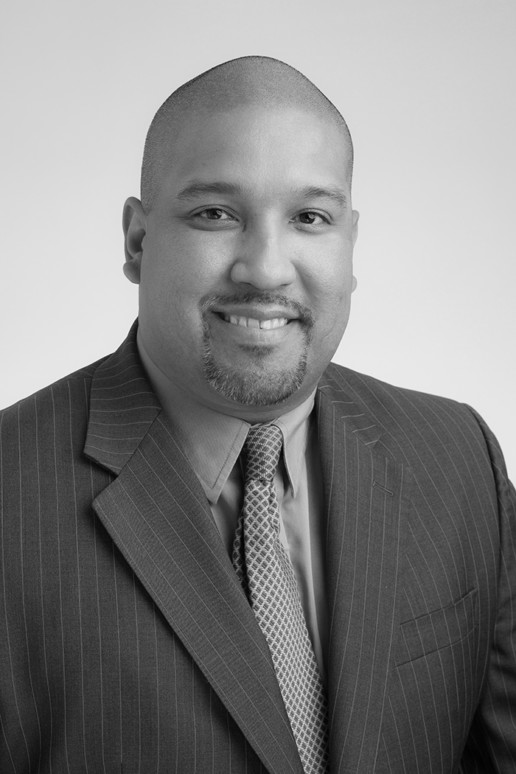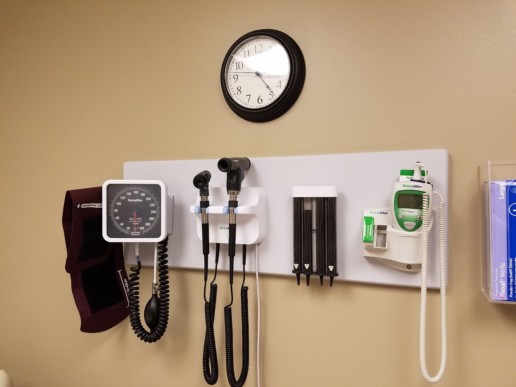The Business Case for Providing Health Insurance to Low-Income Employees
Low income employees without health insurance could be detrimental for a business. This study explains why providing health insurance for low income employees is crucial for successful performance in the workplace.
After the failed negotiations over the repeal of Obamacare earlier in March, the Trump administration appears to be on the brink of proposing a new health care bill. While the details are still sketchy, it seems likely that the new bill will leave many lower-income Americans without access to health insurance.
I believe there is a case to be made that, should this take effect, the private sector has a strong incentive to step in. The provision of health insurance by organizations is a sensible business decision—especially for low-income individuals. In fact, a number of studies—including one that I co-authored—highlight that health insurance coverage can be beneficial to the bottom line of businesses, and should be endorsed by managers as good corporate strategy if they seek to increase their productivity.
Health insurance for low-income employees is good business for at least three reasons: it is linked with reduced levels of stress, more long-term decision-making, and increased cognitive ability, as well as (perhaps somewhat obviously) increased physical health — all of which are crucial components of higher organizational performance.
Health Insurance Can Reduce Stress
Among other positive outcomes, health insurance significantly decreases the level of stress employees experience, as a study described in a recent working paper shows. Johannes Haushofer of Princeton University and several colleagues worked with an organization in Nairobi, Kenya — the metalworkers of the Kamukunji Jua Kali Association (JKA) — and randomly allocated some employees to receive health insurance free of cost for one year. In other words, the researchers sponsored a health care plan for a proportion of JKAs’ employees, whereas others continued working for JKA as usual.
In addition to collecting data through surveys — for example on the employees’ self-reported health and well-being, and their household characteristics — the researchers did something rather unusual: they collected saliva samples from all respondents, which were later tested for the stress hormone cortisol. These measurements occurred at two time points, at the start of the study and at the end.
The researcher’s results were striking. Not only did employees who received free health insurance report feeling less stressed, but this decline correlated with a reduction in the cortisol measured in the saliva sample. The decrease in cortisol was comparable to roughly 60% of the difference between people who are depressed, and people who are not.
This is important for organizations because employees who experience higher levels of stress are more prone to burning out, and less likely to attain high levels of performance. Stressed employees hurt the bottom-line — and interventions that reduce stress benefit it.
Health Insurance Can Lead to More Long-Term Decision-Making
But health insurance can do more, too. A paper I co-authored with Elke Weber of Princeton University and Jaideep Prabhu of Cambridge University that was recently published in the Proceedings of the National Academy of Sciencesfocuses on one reason why low-income individuals have difficulties escaping their destitute situation. As research has found, we show that poor people are more likely to make decisions that favor the short term, even when these decisions involve smaller payoffs than larger payouts they might receive in the future.
In our study, we find that this is partially the case because low-income individuals experience more pressing financial needs than their richer counterparts. Because they are so pre-occupied with making ends meet, they are unable to even consider a possible larger payout in the future. This way, they remain captured in what Johannes Haushofer and Ernst Fehr of the University of Zurich so aptly call the “vicious cycle of poverty.”
However, we also find that interventions that serve to reduce levels of financial need that low-income individuals experience can make them more likely to make more long-term-oriented decisions. One such intervention may be the provision of health insurance. With a safety net they can draw on when health problems arise, poor people may be less likely to experience their financial needs as pressing — and as a result, make more long-term-oriented decisions.
This can lead to significant improvements for organizations as well. Companies require their employees to make many long-term decisions. In many cases, a more long-term orientation is necessary for companies to thrive.
Not Having Health Insurance Can Hinder Cognitive Ability
Finally, health insurance can give low-income individuals peace of mind. A seminal study led by Anandi Mani of the University of Warwick investigated the cognitive consequences of poverty. The researchers found — in concordance with an increasing body of evidence — that lack of money saps people’s attention. While they did not specifically study health insurance, it is easy to extrapolate their research to this question. Given that everyone’s attention is limited, the more people’s concerns weigh on their mind, the less attention they can pay to any one concern.
To illustrate this finding, imagine a case where a low-income employee uses her car to come to work every day. She lives paycheck to paycheck and depends on her steady stream of income. Every day, even when she isn’t driving, she worries about what she would do if her car broke down. Such thoughts circle in her mind incessantly — they are always there, no matter what else she tries to focus her attention on.
Obviously, such worrying thoughts have detrimental consequences for her performance. Constant ruminations make it more difficult to focus on tasks that matter in the moment. Now replace the car in the above scenario with her health; let’s assume she has a chronic condition that requires medical attention when it breaks out. This is not an uncommon case: over 34% of employees have chronic medical conditions, which are even more widespread amongst low-income individuals.
Although many of these physical ailments cannot be cured, their accompanying cognitive detriments can be. Thoughts such as, “How will I pay for the doctor? How can I afford my medication?” could be eradicated with the provision of health insurance. This is especially important for low-income individuals who are more likely to have such worries. And with an increased ability to focus on their work, employees are also more likely to be productive members of the organization.
It is unclear what will happen in Washington D.C. in the next few months. Will Obamacare be repealed? Will millions of low-income individuals lose their health insurance? In the absence of a resolution, managers may have to step up. There is a business case to be made for providing employees with health insurance, which may make them less stressed, improve their long-term decisions, and lead to increased attention on the task at hand — and the case is especially strong for low-income employees.
SOURCE:
Jachimowicz J (29 May 2018). [Web Blog Post]. Retrieved from address https://hbr.org/2017/04/the-business-case-for-providing-health-insurance-to-low-income-employees
How to get the most out of a day off
Time off is necessary but planning an extended vacation may be stressful. These pointers will help show you how micro-vacations can positively benefit your lifestyle.
The idea of “vacation” often conjures up thoughts of trips to faraway lands. While it’s true that big trips can be fun and even refreshing, they can also take a lot of time, energy, and money. A lot of people feel exhausted just thinking about planning a vacation—not just navigating personal commitments and school breaks, but deciding how to delegate major projects or put work on hold, just so they can have a stress-free holiday. Because of this, some might put off their time away, figuring they’ll get to it when their schedule isn’t so demanding, only to discover at the end of the year that they haven’t used up their paid time off.
In my experience as a time management coach and as a business owner, I’ve found that vacations don’t have to be big to be significant to your health and happiness. In fact, I’ve been experimenting with the idea of taking “micro-vacations” on a frequent basis, usually every other week. These small bits of time off can increase my sense of happiness and the feeling of having “room to breathe.”
From my point of view, micro-vacations are times off that require you to use a day or less of vacation time. Because of their shorter duration, they typically require less effort to plan. And micro-vacations usually don’t require you to coordinate others taking care of your work while you’re gone. Because of these benefits, micro-vacations can happen more frequently throughout the year, which allows you to recharge before you’re feeling burnt out.
If you’re feeling like you need a break from the day-to-day but can’t find the time for an extended vacation, here are four ways to add micro-vacations to your life.
Weekend trips.Instead of limiting vacations to week-long adventures, consider a two- to three-day trip to someplace local. I’m blessed to live in Michigan, and one of my favorite weekend trips is to drive to Lake Michigan for some time in a little rented cottage on the shore or to drive up north to a state park. Especially if you live in an urban area, traveling even a few hours can make you feel like you’re in a different world.
To make the trip as refreshing as possible, consider taking time off on Friday so you can wrap up packing, get to your destination, and do a few things before calling it a night. That still leaves you with two days to explore the area. If you get home by dinnertime on Sunday, you can unpack and get the house in order before your workweek starts again.
There may be a few more e-mails than normal to process on Monday, but other than that, your micro-vacation shouldn’t create any big work pileups.
Margin for personal to-do items.Sometimes getting the smallest things done can make you feel fantastic. Consider taking an afternoon—or even a full day—to take an unrushed approach to all of the nonwork tasks that you really want to do but struggle to find time to do. For example, think of those appointments like getting your hair cut, nails done, oil changed, or doctor visits. You know that you should get these taken care of but finding the time is difficult with your normal schedule.
Or perhaps you want to take the time to do items that you never seem to get to, like picking out patio furniture, unpacking the remaining boxes in the guest room, or setting up your retirement account. You technically could get these kinds of items done on a weeknight or over the weekend. But if you’re consistently finding that you’re not and you have the vacation time, use it to lift some of the weight from the nagging undone items list.
Shorter days for socialization.As individuals get older and particularly after they get married, there tends to be a reduction in how much time they spend with friends. One way to find time for friends without feeling like you’re sacrificing your family time is to take an hour or two off in a day to meet a friend for lunch or to get together with friends before heading home. If you’re allowed to split up your vacation time in these small increments, a single vacation day could easily give you four opportunities to connect with friends who you otherwise might not see at all.
If you struggle to have an uninterrupted conversation with your spouse because your kids are always around, a similar strategy can be helpful. Find days when one or both of you can take a little time off to be together. An extra hour or two will barely make a difference at work but could make a massive impact on the quality of your relationship.
Remote days for decompression. Many offices offer remote working options for some or all of the week. If that’s offered and working remotely is conducive to your work style and your tasks, take advantage of that option.
Working remotely is not technically a micro-vacation, but it can often feel like one. (Please still do your work—I don’t want to get in trouble here!) If you have a commute of an hour or more each way, not having to commute can add back in two or more hours to your life that can be used for those personal tasks or social times mentioned above.
Also, for individuals who work in offices that are loud, lack windows, or where drive-by meetings are common, working remotely can feel like a welcome respite. Plus, you’re likely to get more done. A picturesque location can also give you a new sense of calm as you approach stressful projects. I find that if I’m working in a beautiful setting, like by a lake, it almost feels as good as a vacation. My surroundings have a massive impact on how I feel.
Instead of seeing “vacation” as a large event once or twice a year, consider integrating in micro-vacations into your life on a regular basis. By giving yourself permission to take time for yourself, you can increase your sense of ease with your time.
SOURCE:
Saunders E (28 May 2018). [Web Blog Post]. Retrieved from address https://hbr.org/2018/05/how-to-get-the-most-out-of-a-day-off
Benefit change could raise costs for patients getting drug copay assistance
Health plans may change with time. Know what to expect and how to respond with these tips on how to avoid unexpected changes.
Since Kristen Catton started taking the drug Gilenya two years ago, she’s had only one minor relapse of her multiple sclerosis, following a bout of the flu.
She can walk comfortably, see clearly and work part time as a nurse case manager at a hospital near her home in Columbus, Ohio. This is a big step forward; two drugs she previously tried failed to control her physical symptoms or prevent repeated flare-ups.
This year, Catton, 48, got a shock. Her health insurance plan changed the way it handles the payments that the drugmaker Novartis makes to help cover her prescription’s cost. Her copayment is roughly $3,800 a month, but Novartis helps reduce that out-of-pocket expense with payments to the health plan. The prescription costs about $90,000 a year.
Those Novartis payments no longer counted toward her family plan’s $8,800 annual pharmacy deductible. That meant once she hit the drugmaker’s payment cap for the copay assistance in April, she would have to pay the entire copayment herself until her pharmacy deductible was met.
Catton is one of a growing number of consumers taking expensive drugs who are discovering they are no longer insulated by copay assistance programs that help cover their costs. Through such programs, consumers typically owe nothing or have modest monthly copayments for pricey drugs because many drug manufacturers pay a patient’s portion of the cost to the health plan, which chips away at the consumer’s deductible and out-of-pocket maximum limits until the health plan starts paying the whole tab.
Under new “copay accumulator” programs, that no longer happens.
In these programs, the monthly copayments drug companies make don’t count toward patients’ plan deductibles or out-of-pocket maximums. Once patients hit the annual limit on a drugmaker’s copay assistance program, they’re on the hook for their entire monthly copayment until they reach their plan deductible and spending limits.
Catton put the $3,800 May copayment on a credit card. She knows her insurer will start paying the entire tab once she hits the pharmacy deductible. But, she said, she can’t afford to pay nearly $9,000 a year out-of-pocket for the foreseeable future.
“I’m talking to my doctor to see if I can I take it every other day,” she said. “I guess I’m winging it until I can figure out what to do.”
Drug copay assistance programs have long been controversial.
Proponents say that in an age of increasingly high deductibles and coinsurance charges, such help is the only way some patients can afford crucial medications.
But opponents say the programs increase drug spending on expensive brand-name drugs by discouraging people from using more cost-effective alternatives.
Switching to a cheaper drug may not be an option, said Bari Talente, executive vice president for advocacy at the National Multiple Sclerosis Society.
“Generally the multiple sclerosis drugs are not substitutable,” she said. “Most have different mechanisms of action, different administration and different side effect profiles.” Generics, when they’re available, are pricey too, typically costing $60,000 or more annually, she said.
Most MS drug annual copay assistance limits, if they have them, are between $9,000 and $12,000, Talente said.
Employers argue that the drug copayment programs are an attempt to circumvent their efforts to manage health care costs. For example, employers may try to discourage the use of a specialty drug when there’s a lower-cost drug available by requiring higher patient cost sharing.
There’s also the issue of fairness.
“From an employer perspective, everyone under the plan has to be treated the same,” said Brian Marcotte, president and CEO of the National Business Group on Health (NBGH), which represents large employers.
If someone needs medical care such as surgery, for example, that person doesn’t get help covering his deductible, while the person with the expensive drug might, he said.
According to an NBGH survey of about 140 multistate employers with at least 5,000 workers, 17 percent reported they have a copay accumulator program in place this year, Marcotte said. Fifty-six percent reported they’re considering them for 2019 or 2020.
If there is no comparable drug available, drug copayment programs may have a role to play if they can be structured so that participating patients are paying some amount toward their deductible, Marcotte said. But, he said, assistance programs for drugs that are available from more than source, such as a brand drug that is also available as a generic, shouldn’t be allowed.
In 2016, 20 percent of prescriptions for brand-name drugs used a drug copay assistance coupon, according to an analysis by researchers at the USC Schaeffer Center for Health Policy and Economics. Among the top 200 drugs based on spending in 2014, the study found that 132 were brand-name drugs, and 90 of them offered copay coupons. Fifty-one percent of the drugs with copay coupons had no substitute at all or only another brand drug as a close therapeutic substitute, the analysis found.
Advocates for people with HIV and AIDS say copay accumulators are cropping up in their patients’ plans and beginning to cause patients trouble. Drugs to treat HIV typically don’t have generic alternatives.
The biggest impact for the community their organizations serve may be for PrEP, a daily pill that helps prevent HIV infection, said Carl Schmid, deputy executive director at the AIDS Institute, an advocacy group. A 30-day supply of PrEP (brand-name Truvada) can cost nearly $2,000. Drug manufacturer Gilead offers a copay assistance program that covers up to $3,600 annually in copay assistance, with no limit on how much is paid per month.
“They’re at risk for HIV, they know it and want to protect themselves,” Schmid said. “It’s a public health issue.”
Earlier this month, the AIDS Institute was among 60 HIV organizations that sent letters to state attorneys general and insurance commissioners across the country asking them to investigate this practice, which has emerged in employer and marketplace plans this year.
Compounding advocates’ concerns is the fact that these coverage changes are frequently not communicated clearly to patients, Schmid said. They are typically buried deep in the plan documents and don’t appear in the user-friendly summary of benefits and coverage that consumers receive from their health plan.
“How is a patient to know?” Schmid asks. They learn of the change only when they get a big bill midway through the year. “And then they’re stuck.”
SOURCE:
Andrews M (25 MAY 2018). [Web Blog Post]. Retrieved from address https://khn.org/news/benefit-change-could-raise-costs-for-patients-getting-drug-copay-assistance/
A look at how the opioid crisis has affected people with employer coverage
The opioid crisis is affecting more and more people each day. Discover how the opioid crisis affects you with this study on employer coverage.
With deaths from opioid overdose rising steeply in recent years, and a large segment of the population reporting knowing someone who has been addicted to prescription painkillers, the breadth of the opioid crisis should come as no surprise, affecting people across all incomes, ages, and regions. About four in ten people addicted to opioids are covered by private health insurance and Medicaid covers a similarly large share.
Private insurance covers nearly 4 in 10 non-elderly adults with opioid addiction
In this analysis and a corresponding chart collection, we use claims data from large employers to examine how the opioid crisis has affected people with large employer coverage, including employees and their dependents. The analysis is based on a sample of health benefit claims from the Truven MarketScan Commercial Claims and Encounters Database, which we used to calculate the amounts paid by insurance and out-of-pocket on prescription drugs from 2004 to 2016. We use a sample of between 1.2 and 19.8 million enrollees per year to analyze the change from 2004 to 2016 in opioid-related spending and utilization.
We find that opioid prescription use and spending among people with large employer coverage increased for several years before reaching a peak in 2009. Since then, use of and spending on prescription opioids in this population has tapered off and is at even lower levels than it had been more than a decade ago. The drop-off in opioid prescribing frequency since 2009 is seen across people with diagnoses in all major disease categories, including cancer, but the drop-off is pronounced among people with complications from pregnancy or birth, musculoskeletal conditions, and injuries.
Meanwhile, though, the cost of treating opioid addiction and overdose – stemming from both prescription and illicit drug use – among people with large employer coverage has increased sharply, rising to $2.6 billion in 2016 from $0.3 billion 12 years earlier, a more than nine-fold increase.
Trends in prescription opioid use & spending among people with large employer coverage
Opioid prescription use among people with large employer coverage is highest for older enrollees: 22% of people age 55-64 had at least one opioid prescription in 2016, compared to 12% of young adults and 4% of children. Women with large employer coverage are somewhat more likely to take an opioid prescription than men (15% compared to 12%). Opioid prescription use among people with large employer coverage is also higher in the South (16%) than in the West (12%) or Northeast (11%).
Among people with large employer coverage, older enrollees are more likely to have an opioid prescription
Among people with large employer coverage, the frequency of opioid prescribing increased from 2004 (when 15.7% of enrollees had an opioid prescription) to 2009 (when 17.3% did). After reaching a peak in 2009, the rate of opioid prescribing began to fall. By 2014, the share of people with large employer coverage who received an opioid prescription (15.0%) was lower than it had been a decade earlier, and by 2016, the share was even lower, at 13.6% (a 21% decline since 2009).
The share of people with large employer coverage taking opioid prescriptions is at its lowest levels in over a decade
Among people with large employer coverage, this pattern (of increasing opioid prescription use through the late 2000s, followed by a drop-off through 2016) is similar across most major disease categories. Some of the steepest declines in opioid prescription use since 2009 were among people with complications from pregnancy or childbirth, musculoskeletal conditions, and injuries. The share of people experiencing complications from pregnancy or childbirth who received an opioid prescription peaked in 2007, when 35% received an opioid prescription, but this share dropped to 26% in 2016. Similarly, in 2007, 37% of people with large employer coverage who had a musculoskeletal condition received an opioid prescription, but the share dropped to 30% by 2016. The same decline can be seen among people with large employer coverage who experienced injuries and poisonings (37% in 2009, down to 30% in 2016).
Opioid use declined across disease categories, particularly pregnancy, musculoskeletal diseases, and injuries
We also see a sharp decline in the use of opioid prescriptions among people with cancer diagnoses, particularly in the most recent couple of years. In 2016, 26% of people with large employer coverage who had a cancer diagnosis received at least one opioid prescription, down from 32% in 2007. Despite declines in opioid prescribing for musculoskeletal conditions, people with large employer coverage who have musculoskeletal diagnoses still receive opioid medications more frequently (30%) than those with cancer diagnoses (26%).Overall in 2016, among those receiving an opioid prescription, a slightly larger share received only a single prescription in that year (61%) than did in 2006, a decade earlier (58%). The average number of prescriptions each person received also rose from 2004 until 2010 and then fell again, but this measure is imperfect because it does not adjust for the length of the supply or the strength of the drug received.
In total, large employer plans and their enrollees spent $1.4 billion in 2016 on opioid prescription painkillers, down 27% from peak spending of $1.9 billion in 2009. In 2016, $263 million, or 19% of total opioid prescription drug spending was paid out-of-pocket by enrollees.
Spending on opioid prescriptions peaked in 2009
Opioid prescriptions have represented a small share of total health spending by large employer plans and enrollees.
Treatment for Opioid Addiction & Overdose among People with Large Employer Coverage
In 2016, people with large employer coverage received $2.6 billion in services for treatment of opioid addiction and overdose, up from $0.3 billion in 2004. Of the $2.6 billion spent on treatment for opioid addiction and overdose in 2016 for people with large employer coverage, $1.3 billion was for outpatient treatment, $911 million was for inpatient care, and $435 million was for prescription drugs. In 2016, $2.3 billion in addiction and overdose services was covered by insurance and $335 million was paid out-of-pocket by patients. (This total only includes only payments for services covered at least in part by insurance, not services that are paid fully out-of-pocket and not billed to insurance, so it is likely an undercount of opioid addiction and overdose treatment expenses by this population.)
The cost of treating opioid addiction and overdose has risen even as opioid prescription use has fallen
Spending on treatment for opioid addiction and overdose represents a small but growing share of overall health spending by people with large employer coverage. In 2016, treatment for opioid addiction and overdose represented about 1% of total inpatient spending by people with large employer coverage and about 0.5% of total outpatient spending. In 2004, treatment for opioid addiction and overdose represented about 0.3% of total inpatient spending and less than 0.1% of total outpatient spending. On average, inpatient and outpatient treatment for opioid addiction and overdose added about $26 per person to the annual cost of health benefits coverage for large employers in 2016, up from about $3 in 2004.
The bulk of the total $2.6 billion in spending for treatment of opioid addiction and overdose among people with large employer coverage was treatment for young adults, totaling $1.6 billion in 2016, even though young adults are prescribed opioids less often than older adults. Males also used more treatment than women ($1.6 billion vs $1.0 billion).
Spending on opioid addiction and overdose treatment is mostly concentrated among younger people
The bulk of spending by people with large employer coverage on inpatient and outpatient treatment for opioid addiction and overdose was for employees’ children (53%) or spouses (18%), while just under a third (29%) was for employees themselves.
Among people with large employer coverage who had outpatient spending on treatment for opioid addiction and overdose, their average outpatient expenses totaled $4,695 (of which $670 was paid out-of-pocket) in 2016. Among those with inpatient spending on treatment for opioid misuse, their average inpatient expenses totaled $16,104 (with $1,628 paid out-of-pocket) in 2016. On average, inpatient expenses have risen sharply, up from $5,809 in 2004.
In 2016, 342 people per 100,000 large group enrollees received treatment for opioid overdose or addiction, including 67 people per 100,000 who received treatment in an inpatient setting.
Discussion
Among people with large employer coverage, utilization of opioid prescription painkillers has declined somewhat in recent years. Use of and spending on prescription opioids by this group peaked in 2009 and has since dropped to the lowest levels in over a decade. Across most major disease categories, we see a similar pattern of the frequency of opioid prescription use rising until the late 2000s and then declining through 2016.
Despite declining rates of opioid prescribing to those with employer coverage, spending on treatment for opioid addiction and overdose has increased rapidly, potentially tied to growing illicit use and increased awareness of opioid addiction. Opioid addiction and overdose treatment – the bulk of which is for dependents of employees – represents a small but growing share of overall employer health spending.
Methods
We analyzed a sample of claims obtained from the Truven Health Analytics MarketScan Commercial Claims and Encounters Database (Marketscan). The database has claims provided by large employers (those with more than 1,000 employees); this analysis does not include opioid prescription or addiction treatment for other populations (such as the uninsured or those on Medicaid or Medicare). We used a subset of claims from the years 2004 through 2016. In 2016, there were claims for almost 20 million people representing about 23% of the 85 million people in the large group market. Weights were applied to match counts in the Current Population Survey for large group enrollees by sex, age, state and whether the enrollee was a policy holder or dependent. People 65 and over were excluded.
Over 14,000 national drug codes (NDC) were defined as opiates. In general, we defined “prescription opioids” as those with a primary purpose of treating pain. Only prescriptions classified under the controlled substance act are included. We excluded from this category Methadone, Suboxone (Buprenorphine with Naloxone), and other drugs commonly used to treat addiction. We also excluded medications not commonly prescribed (such as Pentazocine). Each opiate script was counted as a single prescription regardless of the quantity or strength of that prescription. The Marketscan database only includes retail prescriptions administered in an outpatient setting. Disease categories are defined by AHRQ’s chronic condition indicators, and based on the diagnosis an enrollee receives.
In our analysis of opioid addiction and overdose treatment, we include medications used to treat overdose (e.g. Naloxone) and drugs used to treat addiction (e.g. Methadone and Suboxone). We also include inpatient and outpatient medical services to treat opioid addiction or overdose, identified by ICD-9 and ICD-10 diagnosis codes. Midway through 2015, Marketscan claims transitioned from ICD-9 to ICD-10. While both systems classify diagnoses, there is no precise crosswalk between the two. In consultation with a clinician, we selected both ICD-9 and ICD-10 codes which are overwhelmingly used for opioid addiction or signify misuse. A list of these ICD codes is available upon request. Because of the change in coding systems, it is not possible to tracks trends between 2014 and 2016. Diagnoses related to heroin abuse were included as opiate abuse.
Because there is no precise way to identify costs associated with opioid addiction and overdose treatment, some of our rules for inclusion lead to an underestimate, while others lead to an overestimate. In general, we elected a conservative approach. For example, in some cases, opioid abuse diagnoses may be classified under a broader drug abuse diagnosis and therefore are not captured. Additionally, we do not include the costs associated with diagnoses that commonly arise from opioid abuse, such as respiratory distress or endocarditis, unless an opioid abuse diagnosis was also present. However, if a claim included an opioid abuse diagnosis along with other diagnoses, we included spending for all procedures during that day, even if some of those interventions were to treat concurrent medical conditions unrelated or indirectly related to opioid abuse. If an enrollee paid fully out-of-pocket and did not use their insurance coverage, this spending is also not included. Overall, we think these assumptions lead to an underestimate of the costs associated with opioid addiction and overdose treatment for the large employer coverage population.
SOURCE:
Cox C (24 May 2018). "A look at how the opioid crisis has affected people with employer coverage" Web Blog Post]. Retrieved from address https://www.healthsystemtracker.org/brief/a-look-at-how-the-opioid-crisis-has-affected-people-with-employer-coverage/#item-start
Are your employees scared to take time off?
Your employees might be feeling pressured and overworked. Avoid low productivity in your workplace with these tips on vacation impact.
They might be getting paid time off, but close to half of American workers aren’t taking it—or aren’t taking as much of it as they’re entitled to. And that’s making for a workforce that’s not only overworked and under stress, but actually being pressured to forego time that they’re entitled to.
So says “The PTO Pressure Report” from Kimble Applications, which finds that not only have 47 percent of employees not taken as much PTO as they’re entitled to, 21 percent admit to having left more than five vacation days unused. According to survey respondents, workload-related stress is the top reason so many are failing to use all the PTO they’re entitled to: 27 percent say they just have too many projects or deadlines to take time off, and 13 percent dread the heaps they’ll find on their desks when they get back.
Their bosses aren’t helping, either, with 19 percent of respondents saying that they’ve felt pressured by employers or managers to abstain from vacation. Not only that, more than a quarter are actually nervous or even anxious at the thought of submitting a time-off request; 19 percent worry about being away from work, while 7 percent fear that their requests will be denied.
But businesses could actually be shooting themselves in the foot by keeping such a tight rein on employees. Says the report, “These managers likely don’t realize that this is having a direct, negative impact on the business, as past research indicates that employees who take most or all of their vacation time each year perform better and are more productive than those who do not.”
Even if they get to go on vacation, it’s not doing a lot of them much good. They’re too wired into the job, with 48 percent saying they proactively check in on vacation. A surprising 19 percent do so every day, with another 29 percent doing so periodically. And the boss isn’t making it easy to be on vacation once they get to go; 29 percent of workers say they’re expected to be available for emergencies, and another nine percent say they’re expected to check in frequently. Can’t exactly unwind too well with that hanging over their heads, which means they get back to work stressed out from making sure they satisfy vacation’s employment obligations.
They think they’ll get ahead that way, though—at least 14 percent believe that if they leave that vacation time on the table, they’re more likely to succeed and move up in the ranks. And 19 percent say that’s more important to them than the vacation time they’re abandoning—they’d give up their vacation time for a whole year if it meant they’d nail a promotion.
Younger employees are more willing to work instead of take time off than their elders ; 25 percent of those aged 25–34 feel this way compared to only 17 percent of those aged 55–64.
What businesses may not realize is how important PTO is for the company’s bottom line. Mark Robinson, co-founder of Kimble Applications disagrees. “I am an advocate of giving people a reasonable vacation entitlement and then encouraging them to take it,” he says in the report. ”My experience is that businesses work best if there is clarity about this and people feel confident about planning their vacation well in advance. That is better for the individuals and it allows the business to forecast and budget better too.”
Robinson adds, “American businesses sometimes offer unlimited time off—but they know that in most cases that ends up with people taking less time off. Also, in businesses where people don’t feel confident enough about taking vacations to plan them well in advance, there can be an issue at the end of the year when they suddenly all disappear at once. Successful, sustainable organizations learn to plan their business around PTO time.”
SOURCE:
Satter M. (22 May 2018). “Are your employees scared to take time off?” [Web Blog Post]. Retrieved from address https://www.benefitspro.com/2018/05/22/are-your-employees-scared-to-take-time-off/
Fresh Brew With Kevin Hagerty
Welcome to our brand new segment, Fresh Brew, where we will be exploring the delicious coffees, teas, and snacks of some of our employees! You can look forward to our Fresh Brew blog post on the first Friday of every month.
“Try to save what you can. You’ll be glad you did later.”
Kevin has been a Financial Advisor for 18 years specializing in financial planning solutions.
He and his wife Lori enjoy spending their free time involved in various school and sporting events with their two sons. They also enjoy spending time visiting family on the shores of Northern Michigan’s Lakes and working on various projects around the house like landscaping.

Favorite Brew
Flavored Coffee
“I just like it! Highly recommend Carabello Coffee for your flavored coffee needs!”
Saxon's Go365 Clinic: A Can't Miss Wellness Event
In this installment of CenterStage, we are spotlighting our upcoming event, as presented by our Wellness Director, Abby Graham!

Saxon, along with Humana and HealthWorks, will host a wellness seminar about Humana’s wellness program on Wednesday, May 23. This exciting wellness clinic will aid employers in creating a more engaged workforce around wellness. Plus, there may be an awesome incentive involving a discount on insurance premiums, so keep reading!
Relationship Status - Going Strong
Humana is an insurance carrier represented by Saxon. Humana offers a personalized wellness and rewards program that we find to be exceptional for helping workplace environments create a great sense of community and health. HealthWorks is an outside vendor that works alongside Humana to provide wellness guidance and related services. HealthWorks will have a roundtable discussion explaining how they coordinate benefits with the Go365 program. With all three of us together at the event, employers will have the ability to have all their questions answered and have educational resources at their disposal.
Things to Look Forward to
“If you are someone in your company that is into wellness and is wanting to get others involved in a health initiative, then this event is for you! It will allow you to become an expert on Humana’s Go365 program and see why it is a fantastic incentive-based wellness program.” - Abby Graham
The event will feature several individual round tables, each one covering a different topic (see next page for topics). There will even be a 15% discount on premium insurance once you reach Gold Status in the program. The event is free to attend, and breakfast and lunch will be provided.
Sounds pretty great, right? If you are interested in saving money, increasing employee incentives, and creating a healthier workforce, be sure to sign up now to attend our Go365 seminar.
All questions and concerns regarding the event can be directed to Abby Graham at 513.334.0371 or send her an email via agraham@gosaxon.com. We can't wait to see you there!
Fresh Brew With Frank Lopez
Welcome to our brand new segment, Fresh Brew, where we will be exploring the delicious coffees, teas, and snacks of some of our employees! You can look forward to our Fresh Brew blog post on the first Friday of every month.
“Our goal is to understand the current situation and what the client wants to accomplish.”
Frank remains consistently driven to build strong business and personal relationships based on trust and loyalty. He has become a trusted advisor to his clients, utilizing his knowledge of the health care field, his experience, and his ability to connect people and build relationships.

Favorite Brew
Light Beer
“Bud Light, Miller Lite, Coors Light…it’s really the people you are enjoying it with that matters! Logo’s Sports Bar & Grill is my recommendation.”
Favorite Snack
Silver Spring House
“Peanuts, popcorn or wings. Silver Spring House has a great setup!”
Saving For Your Children's Education
Save this helpful post to your device by Downloading the PDF.

This month’s CenterStage features Kevin Hagerty, a Financial Advisor at Saxon. With over 18 years of experience specializing in financial planning solutions, Kevin provides his best advice on educational funding, specifically on 529 Savings Plans.
Educational Funding from Every Angle
In the long run, saving for your children’s education is considerably less costly than borrowing money later. Now more than ever, parents and grandparents are interested in alternate forms of schooling, such as private school. This means educational debt takes place long before college and is why President Trump implemented tax law changes to allow 529 Savings Plans to be used on more than just college.
A key benefit of 529 plans is the potential for compounded, tax-free growth on account funds. Similar to other investments, the earlier the account is started and left untouched, the more funds can grow over the years.
Kevin says, “Whether it’s a car, a TV, a refrigerator, education, retirement, or healthcare – the cost of everything continues to increase.” Having savings to fall back on through the 529 Savings Plan is immensely helpful but most importantly, it gives you options. One of the most frequently asked questions by parents is when they should start saving for their children’s education, and the unfortunate fact is – with inflation – you’re likely already behind. It’s tough for parents, especially new parents, to juggle the high costs of every little thing. “I recommend plugging estimates into an online cost calculator,” Kevin suggests. “Nowadays, those calculators will take into consideration everything – from taxes to inflation to annual income. It’s a great way to see how much a parents’ savings account should aim for.”
What is a 529 Savings Plan?
“529 plans are versatile savings accounts that offer federal, and sometimes state, tax benefits. depending on the state you live in, plans are operated in many different ways. You may be able to purchase prepaid tuition credits to use in the future or invest in mutual fund options that grow your 529 account value toward the future educational cost of your child.”
-SavingForCollege.com
K-12 Educational Funding & Unused Funds
Kevin cites the 529 Savings Plan as one of the best educational saving plans on the market due to the new tax law changes. Under the Tax Cuts and Jobs Act, families can now use up to $10,000 annually on tuition expenses at a private elementary or secondary school, increasing educational opportunity for many families. Additionally, under this type of plan, anyone can contribute to the savings – not just the parents. So, family members who would like to help the kids out can contribute.
Many people mistake the 529 Savings Plan to just be for tuition, when in fact the list of eligible educational expenses that it covers is quite broad, including things like books, room, board and supplies. So, that expensive laptop your child’s school requires? Covered. Ask your advisor for a complete list. As far as unused funds in an account go, if you have more than one child and the first child doesn't use all the funds for his or her educational expenses, then you can transfer the funds into the other child's name.
Conclusion
Like most financial planning matters, what will ultimately benefit your family most will be unique to your specific situation. Working with a financial advisor, such as Kevin, to discuss factors unique to your situation and design an appropriate strategy can be easier than you think. Contact Kevin today at 513.333.3886 or shoot him an email at khagerty@gosaxon.com for more information.</span style>
Save this helpful post to your device by Downloading the PDF.

Financial shocks could disrupt tomorrow’s retirees
While today’s retirees, dependent as they are on Social Security and traditional pensions rather than 401(k)s, are better able to withstand financial shocks, tomorrow’s retirees won’t have it so easy.
They will be more in danger of being forced to downsize or spend down their assets to meet unexpected expenses such as a spike in medical bills or a loss of income through being widowed.
So says a brief from the Center for Retirement Research at Boston College, which investigated the financial fragility of the elderly to see how well they might be able to deal with financial shocks.
The reason the elderly are seen as financially fragile, the brief says, stems from the fact that, “once retired, they have little ability to increase their income compared to working households.”
And with future retirees becoming ever more dependent on their own retirement savings, and receiving less of their retirement income from Social Security and defined benefit plans, those financial shocks will get harder and harder to deal with.
To see how that will play out, the study looked at the share of expenditures a typical elderly household devotes to basic needs. Next, it looked at how well today’s elderly can absorb those aforementioned major financial shocks. And finally, it examined the increased dependence of tomorrow’s elderly on financial assets, whether those assets are sufficient, and how well those assets do at absorbing shocks.
Nearly 80 percent of the spending of a typical elderly household, the report finds, is used to secure five “basic” needs: housing, health care, food, clothing, and transportation. In lower-income households or the homes of single individuals and in households that rent or have a mortgage, those basic needs make up even more of a household’s spending.
And while there are areas in which a household can cut back—such as entertainment, gifts or perhaps cable TV—as well as potential cutbacks on basic needs, typical retirees can’t cut by more than 20 percent “without experiencing hardship.” And among those lower-income and single households, as well as those with rent or mortgages to pay, the margin is even slimmer.
The need for medical care is so important to those who need it, says the report, that the question becomes whether medical expenditures crowd out spending on other basic items.
And while a widow is estimated by federal poverty thresholds to need 79 percent of the couple’s income to maintain her standard of living, other studies indicate that widows get substantially less than that from Social Security and a pension—estimates, depending on the study, range from 62 percent to 55 percent. And that likely does not leave a widow enough to meet basic expenses.
Among current retirees, only 10 percent report having to cut back on necessary food or medications because of lack of money over the past 2 years.
However, retirees tomorrow, if they have failed to save enough to see them through retirement, are likely to experience income declines of from 6 to 21 percent for GenXers—and that’s assuming that GenXers “annuitize most of their savings at an actuarially fair rate…” despite the fact that very few actually annuitize, and cannot get actuarially fair rates even if they do.
And since the brief also finds that the greater dependency of tomorrow’s retirees on whatever they’ve managed to save in 401(k)s means that they’re exposed to new sources of risk—“that households accumulate too little and draw out too little to cushion shocks and that their finances are increasingly exposed to market downturns”—that means that future retirees will be subjected to a reduced cushion between income and fixed expenses.
To compensate, they will need to downsize and cut their fixed expenses. Neither one bodes well for a comfortable retirement.
Read the article.
Source:
Satter M. (1 March 2018). "Financial shocks could disrupt tomorrow’s retirees" [Web Blog Post]. Retrieved from address https://www.benefitspro.com/2018/03/01/financial-shocks-could-disrupt-tomorrows-retirees/












